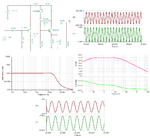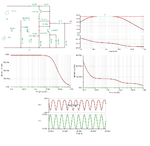Amondesire
Newbie level 4
hi guys, I want to design a two stage Amplifier with the following parameters Av=300, Zi=1M, VCC=+12v I tried deriving the parameters to use but have not been successful as my lecturer has always said I'm wrong. he said its has to be CC-CE which I'm a little bit confused. I wud be greatful someone can help me whatever way you can.
thnks
thnks


